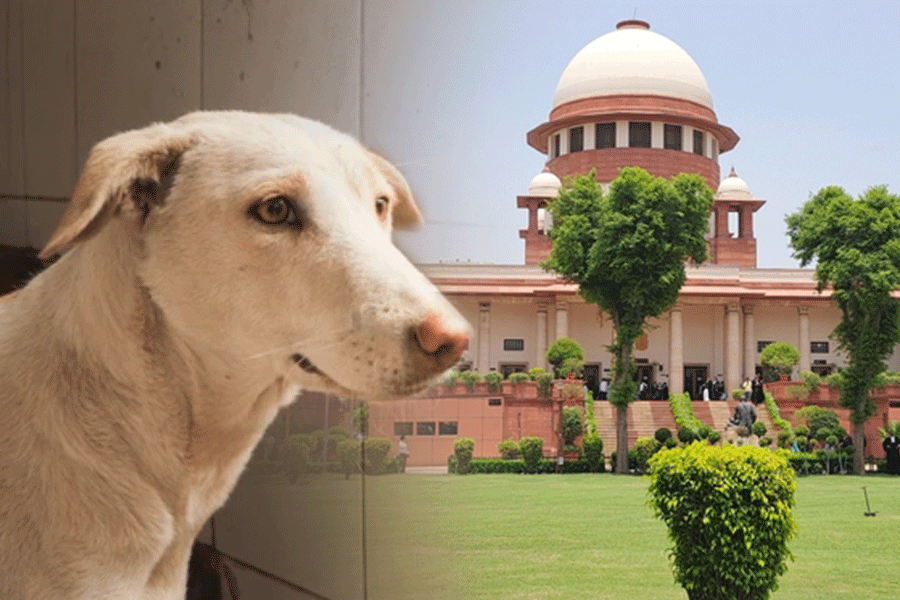 |
Ranchi, Oct. 25: In Hindu mythology, it appears as the wish-fulfilling tree. Renowned for its medicinal properties and the many uses of each of its parts, the endangered Kalpataru or Kalpavriksh tree has now been given a new lease of life by the research wing of the state forest department.
Three hundred saplings of the tree, which had all but disappeared from the state — only three survive near Ranchi’s Doranda College — are being nurtured at two government nurseries in Ranchi’s Garkhatanga and Jamshedpur’s Gamharia after techniques to germinate and conserve new breeds of this historical tree were developed.
“We have over 250 saplings ready in our Gamharia nursery. We had 75 in Garkhatanga till a few months ago that were picked up by several people,” said Kamlesh Prasad Singh, range officer at Garkhatanga nursery. “They grow very slowly so it will take a few years to prepare a mother tree,” he added.
Former chief minister Shibu Soren and former deputy chief minister Sudhir Mahto were among those who picked up the saplings, which are being sold at present for Rs 6, while a seed costs Rs 1.50. “We now have the know-how of conserving and increasing this specie. However, our success depends on effective propagation both at the departmental and personal level,” said Singh.
According to A.K. Mishra, additional principal chief conservator of forests (working plan and research), the department will soon chalk out means for its effective plantation and propagation. “So far, we had been experimenting, but now we know the tricks of creating new trees and we will start some plantation activities in various parts of the state,” he said.
The research process to save the tree for extinction started late last year after the department procured a few fruits from a mother tree.
What followed was a series of hits and misses. “We adopted various methods like simple planting, soaking them in cold water and then in hot water. Nothing worked initially. Finally, we cracked the seed a bit and soaked it in plain water for 24 hours before planting it. It worked and 70 saplings grew out of it,” said Singh. A similar method was repeated in Gamharia nursery and it worked there too. The research wing is now experimenting with branch cutting method as an alternative.
According to mythology, whoever prayed for anything while standing under the Kalpavriksha had his or her wish fulfilled.
The tree, also known as Adasonia digitata or baobab, is of African origin. It was brought to Ranchi by British settlers more than 200 years ago.
“Its bark is used to prepare medicines. It is also a coolant. If you are thirsty, just chewing the bark will quench your thirst for hours. The tree has the capacity to store a lot of water in its trunk,” said the range officer.
In parts of Africa, the leaves of the tree are eaten. Its fruit is said to contain more vitamin C than oranges and more calcium than milk. The seeds are mostly used as thickener for soups. The tree is also a source of fibre, dye and fuel.










